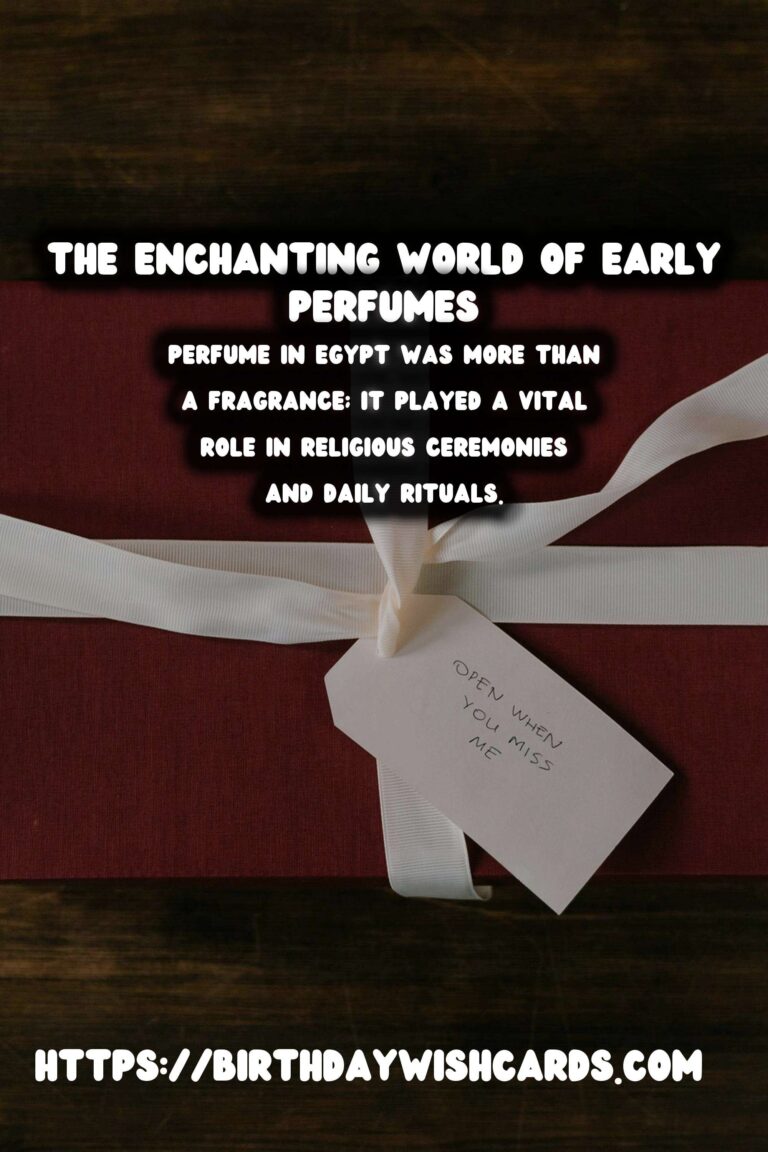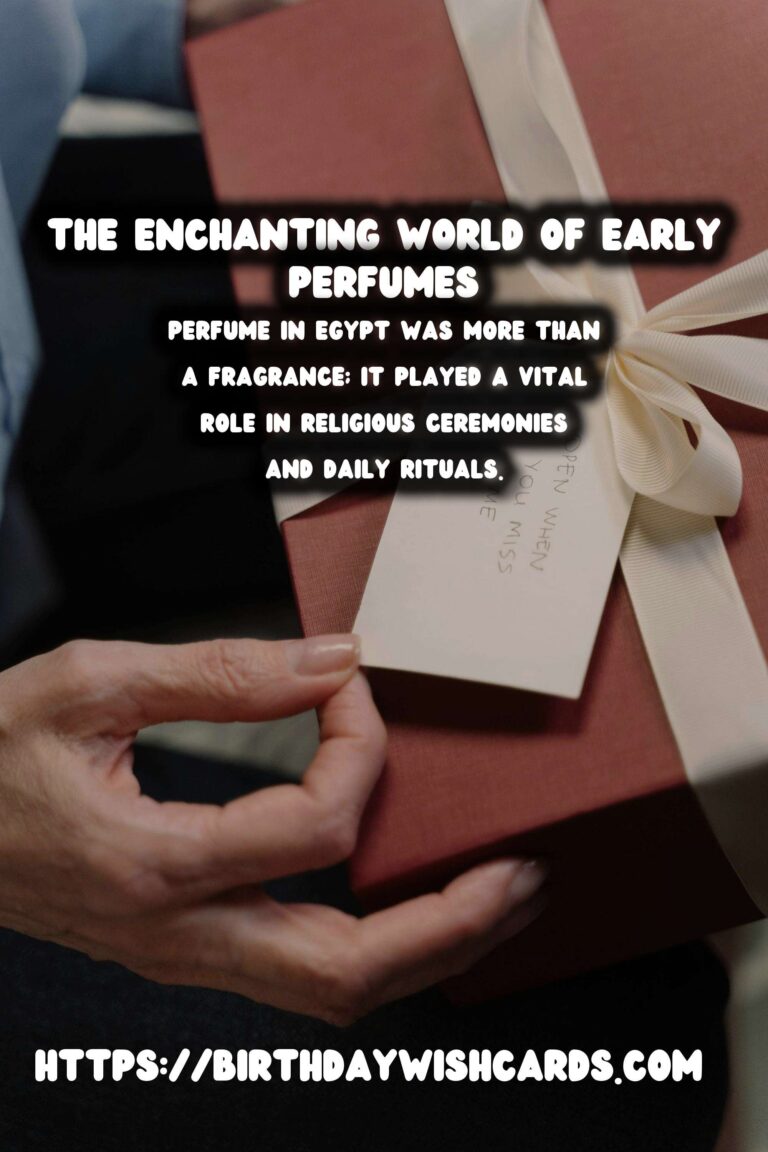
Since ancient times, the art of perfume making has fascinated people across the world. Perfume’s history is as rich and varied as the cultures that have embraced it. This aromatic journey begins thousands of years ago and continues to influence modern fragrances today.
Ancient Origins of Perfume
The word ‘perfume’ is derived from the Latin phrase ‘per fumum,’ meaning ‘through smoke.’ The origin of perfume can be traced back over 4,000 years to the Mesopotamians, who created the first known perfumes from burnt resins and woods. Ancient Egyptians later refined the process, and they are credited with inventing the art of perfumery as we know it today.
Perfume in Egypt was more than a fragrance; it played a vital role in religious ceremonies and daily rituals. The Egyptians believed that a good scent was not just pleasing but also had power to connect the living with the gods. Ingredients like myrrh, frankincense, and other medicinal herbs were commonly used and were highly valued commodities.
The Influence of Greece and Rome
As trade expanded, so did the spread of perfume-making techniques, reaching Greece and Rome by 400 B.C. These cultures adopted and adapted Egyptian fragrance methods, adding their own twist. Perfume was linked with hedonism and luxury, often being used for worship, ceremony, and seduction.
The Romans further commercialized perfume, establishing shops around the Empire that sold exotic scents to the wealthy and influential. Pliny the Elder documented the widespread use of perfumes, noting its immense popularity in daily Roman life.
The Islamic Golden Age
During the Islamic Golden Age (from the 8th to the 13th century), the science of fragrance took another significant leap. Arab and Persian scientists played crucial roles in developing the methods of distillation and filtration, creating purer forms of fragrance extracts.
Al-Kindi, an Arab philosopher, wrote extensively on the subject of perfume and distillation, while Avicenna, a Persian polymath, introduced the process of extracting oils from flowers. It was during this period that perfume became more accessible, evolving from resin-based formulas to more complex liquid formats.
The Renaissance and Beyond
The Renaissance in Europe brought about a renewed interest in art and culture, with perfume taking center stage once again. Trade with the Middle East and the Americas introduced new ingredients that enriched European perfumery. Venice and Florence became major centers for perfume-making.
By the 17th century, France emerged as the capital of perfume artistry. Grasse, a town in the south of France, specialized in growing and processing fragrance materials and quickly became a hub for the production of fine perfumes, a reputation it maintains today.
Into the Modern Era
Perfume continued to evolve, with synthetic compounds introduced in the late 19th century, allowing for even greater creativity. Popular brands and legendary perfumes like Coco Chanel No. 5 and Guerlain’s Shalimar emerged, making perfume an integral part of fashion and identity.
The modern perfume industry is a testament to thousands of years of craftsmanship, artistry, and alchemy, incorporating both ancient tradition and cutting-edge technology.
Conclusion
The history of perfume is a vibrant tapestry that illustrates human ingenuity and the universal desire for beauty and elegance. As we continue to explore new fragrances and flavors, the legacy of ancient perfumers remains an inspiring reminder of our collective heritage.
Since ancient times, the art of perfume making has fascinated people across the world. Perfume in Egypt was more than a fragrance; it played a vital role in religious ceremonies and daily rituals.
#PerfumeHistory #AncientScents

